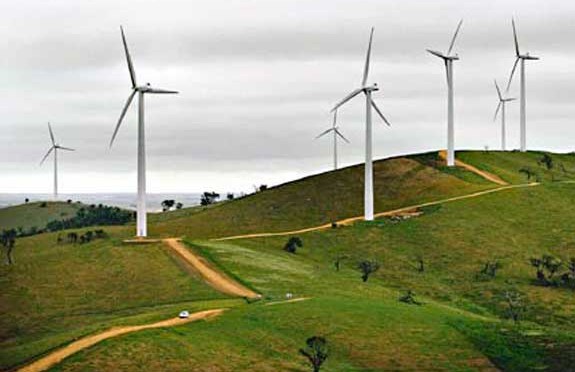Ambitious plans to connect the UK’s grid to a new fleet of wind farms in Ireland could be put at risk if the British and Irish governments do not send a clear signal this autumn that they support the concept of importing and exporting renewable power between the two countries.
Ministers from both countries announced earlier this summer that they are working on a memorandum of understanding (MoU) on renewable energy trading that could be signed this autumn, and would hopefully provide the foundations for a formal agreement next year.
But one of the leading developers working on plans for a new cable linking wind farms in mid-Ireland to the UK’s electricity grid is concerned that the continued failure to deliver a clear policy framework for the project could jeopardise the chances of imported renewable energy playing a role in the UK meeting its binding renewable energy targets for 2020.
Tim Cowhig, chief executive at Element Power, the company behind the Greenwire project to connect 3GW of proposed onshore wind farm capacity in Ireland to the UK grid, told BusinessGreen the €8bn investment could face delays if it does not receive clear backing from politicians.
“We will see these types of international grid projects happen, but the question is whether we can move quickly enough to help meet the UK’s 2020 target,” he said. “You have to wait three years for the cables to be delivered as there is a lot of demand for them internationally, so we need to be placing orders in two years’ time at the latest if we are to stick to our timetable of coming online in 2018.”
The company already has an agreement in place with National Grid to connect to the UK grid and is confident the subsea cables will not require any further overhead cables in the UK and could potentially lead to a reduction in the number of pylons currently required in Wales.
But it cannot make any significant further strides forward with planning applications and fund-raising until there is clarity on the policy environment in which the project will operate.
Specifically, Cowhig said investors needed confirmation that the support for renewable energy that will be made available through the government’s electricity market reform will also be available to clean electricity imported into the UK. “We need a strong signal from the UK government that it will look to other jurisdictions to help meet its renewable energy targets,” he argued.
Prime Minister David Cameron has signalled his support for a northern European supergrid connecting sources of clean energy and a new interconnector between the UK and Ireland was only opened last week. Moreover, the Department of Energy and Climate Change has said that it will issue a call for evidence on international renewable energy trading and it is hoped the promised MoU will also offer a clear commitment to support the concept.
But currently the Greenwire project and similar proposals for an Anglo-Irish renewable energy link recently unveiled by clean energy developer Mainstream Renewable Power are awaiting more detailed policy signals before they can begin to accelerate the development process.
If the government does allow imported power to access the UK’s clean energy support regime then Cowhig is confident that investors would be attracted to a project that could provide up to 10 per cent of the UK’s 2020 renewable energy target.
“Our argument is that this is a way of delivering offshore wind farm scale with onshore wind farm risks,” he said. “We reckon you could realise a saving of £7bn compared to delivering an offshore wind farm of the same size.”
He added that local authorities in Ireland have already expressed interest in the concept and once planning approval is secured it should be possible to attract large scale investors. “Between £13m and £15m would be needed for the higher risk capital to get through the planning applications and early stages, but after that it is quite easy to raise significant funds for secure green investments,” he said.


